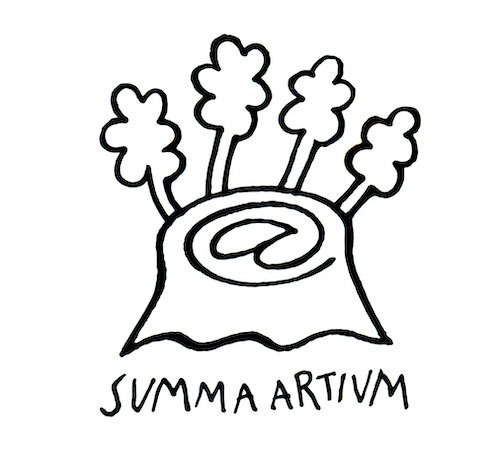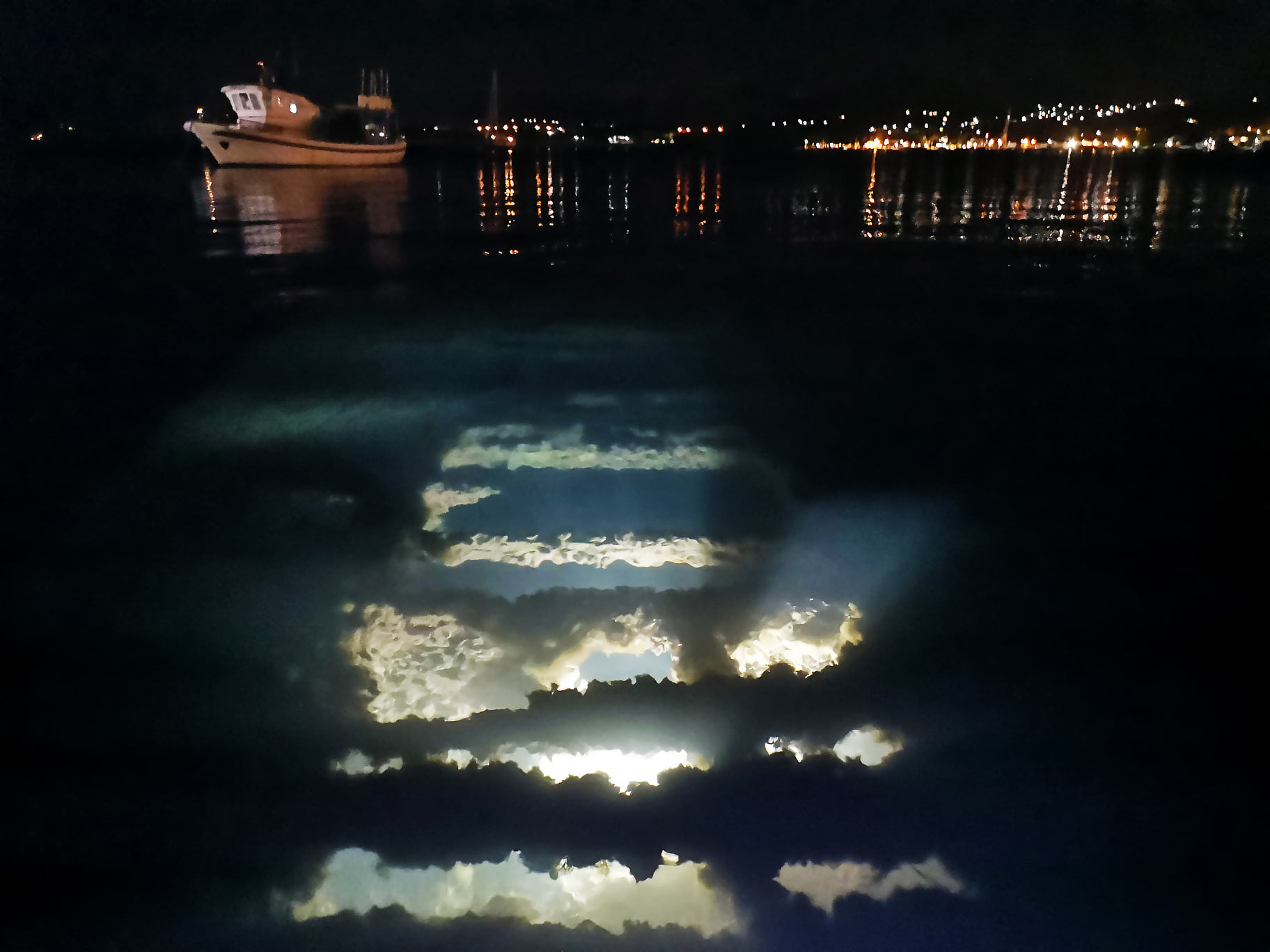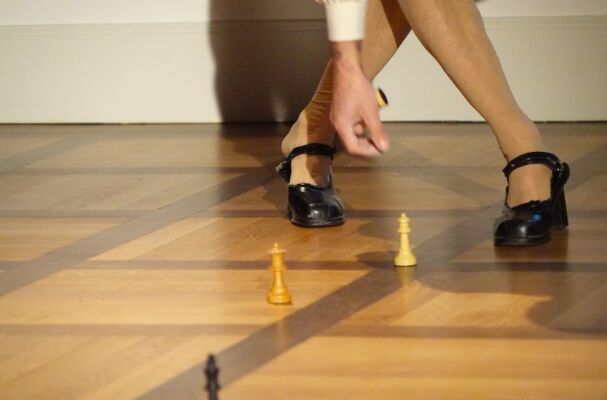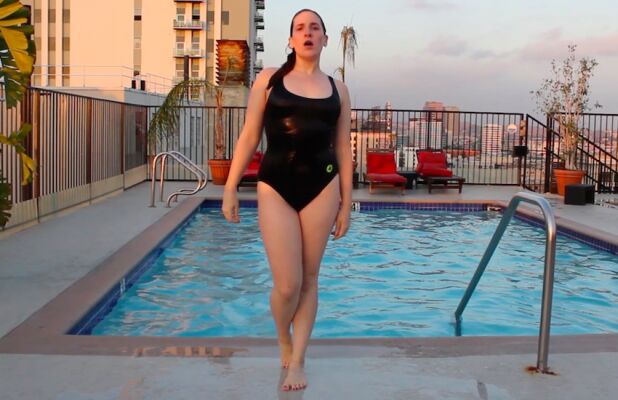Gold und Liebe II. – There are No Boundaries
About Hyperlink Athens, collaborative curation and practices of resistance in Greece
Hyperlink Athens is the project of two young Greek artists, Alexandra Koumantaki and Yannis Voulgaris. It’s an independent curatorial platform and elastic artistic collaboration. The collective has been re-shaping itself since 2017, through cooperations, off-site and in-situ works that break down and reinterpret the borders of artistic and curatorial work, real and virtual space and the medial frames of what an artwork can be.
Alexandra Koumantaki (1993) is a multidisciplinary artist, who lives and works in Athens. She holds a degree in Fine arts and Art science by the University of Ioannina. Her personal practice is formed through a variety of different mediums such as light installations, sculpture, films, photography and sound. The narrative behind her artistic practice combines the concepts of bio fiction, mysticism, archaeology, computation and the exploration of the universal, the fantastic, and otherness.
Yannis Voulgaris is a visual artist based in Athens. He is a fine art graduate from the Birmingham City University (2015) and prior to this he obtained a degree in psychology (2010). His practice is an amalgamation of sculpture, installation and video while he is interested in the performative aspect that emerges within his work.
Ráhel Anna Molnár: Could you summarise how do you experience the artistic community in Athens? I know there are many active non-profit galleries like Hot Wheels Athens or ERGO Collective, although we don’t have much knowledge about the scene in general.
Alexandra Koumantaki: There is a sense of freedom, I think that’s the most important thing. I used to live in Berlin, but there are so many boundaries – it’s all just rules, contracts, insurances. Here, it’s lawless. The city is a playground. You know there is the myth of a scary, corporate art-world that we all have in our minds. Of course, it is a real thing, anyhow, we don’t want to be involved in it. We try to be professional as much as we can, we put a lot of effort and personal money in our work, and we take it seriously, but we also want to enjoy it. I think it’s not only us, but rather a general approach in Athens. Perhaps, it’s not the best term to say it, but I would call it more primitive. When you apply to some institution, it’s always a process of framing. The sparkle of unknown is lost – if someone finances you, they will want to know if it will work.
Yannis Voulgaris: You have to fit in a frame. I would say the artistic scene is quite active. The city itself is very energised. There is always something going on and there are a lot of project spaces, different locations and collectives popping up. There’s a lack of institutions and there is no proper funding from the state – that situation has led us to be more creative and take more initiative without having to wait for the state or any approval. Consequently, people are more autonomous and there is a sense of self-organisation. We didn’t even had a contemporary art museum for years, it had been closed.
A. K.: We do have the metro, though. If you want to see modern Greek art, just stop on every station. There’s a work of an artist in each one, mainly from the 80’s. Also there’s Current Athens, a platform that collects info about contemporary art spaces, exhibitions, artists and curators, but I miss another kind of community. You see some record labels releasing albums only by local artists, and you know there’s an electronic music scene. I wish people would be more connected here, in Greece. Sometimes we’re approaching things in a rather individualistic way, although a closer community would fit better to the scene, as it is so free and there are no rules.
Y. V.: I would say individualism is a global phenomenon. It’s a characteristic of our society.
After the first exhibitions that you curated under Hyperlink in rather classical gallery settings you started to transplant your practice to the virtual domain. Could you speak about what is actually Hyperlink and what was the motivation of leaving the physical sites of contemporary art institutions?
Y. V.: We didn’t feel challenged enough to do another group exhibition in a gallery. We wanted to push it further and start exploring different things. It’s also about exploring ourselves. We started to leave the gallery space to explore other locations (empty artist studios, abandoned buildings and factories), and experiment with the medium of the online exhibition. It’s important to our practice that we don’t have a studio space. This also allows us to search for spaces, to move around in the context of different situations. It’s a vital part of our practice as each of our projects is executed in different spaces.
A. K.: When we started working together, we curated a few exhibitions in gallery spaces here in Athens, but shortly after we took a break to reflect on what we actually want to do. We thought it’s not what the art scene needs, not another curatorial thing. We started to question what a final art piece is, where is the end of the artwork. We started to create online shows in 2018. The first one was There’s nothing left but you and from that on, there was no return. Then came Seeds of Caleum, a group show that was curated by Christina Gigliotti in the Berlin Botanical Gardens. Back then, we still installed already finished works in the garden. The terms off-site and in-situ are often confused and blurred. When you take a rock, hide it somewhere and tell someone to find it, that is in-situ. Or if you draw something on it and give it to someone. Although, we really love and appreciate online platform such as Tzvetnik, AQNB or OFluxo, we didn’t want to present only photographic documentation about what we did. So we created a website, very similar in its structure and aesthetic to that of video-game menu. Again, we pushed our own boundaries a little further with this project.
From the beginning our website is important for us. We wanted to have a space, where people can virtually enter, and be there inside this particular reality of the artworks. To have a full experience, instead of just looking at a square on Instagram. We had a big lesson on how that platform works when one day during the quarantine, Instagram deleted over a thousand of our followers. We tried to build our community without paying for it of course, but you have to keep up all the time, you have to be posting and reacting continually, otherwise you’re non-existent for these platforms. We still have an Instagram account but still, it’s just a square. It’s the same format all the time, there is nothing more to say about it.
Y. V.: It’s also important, that we always take a break between our projects, rather than being present continually. We have to have something to tell.
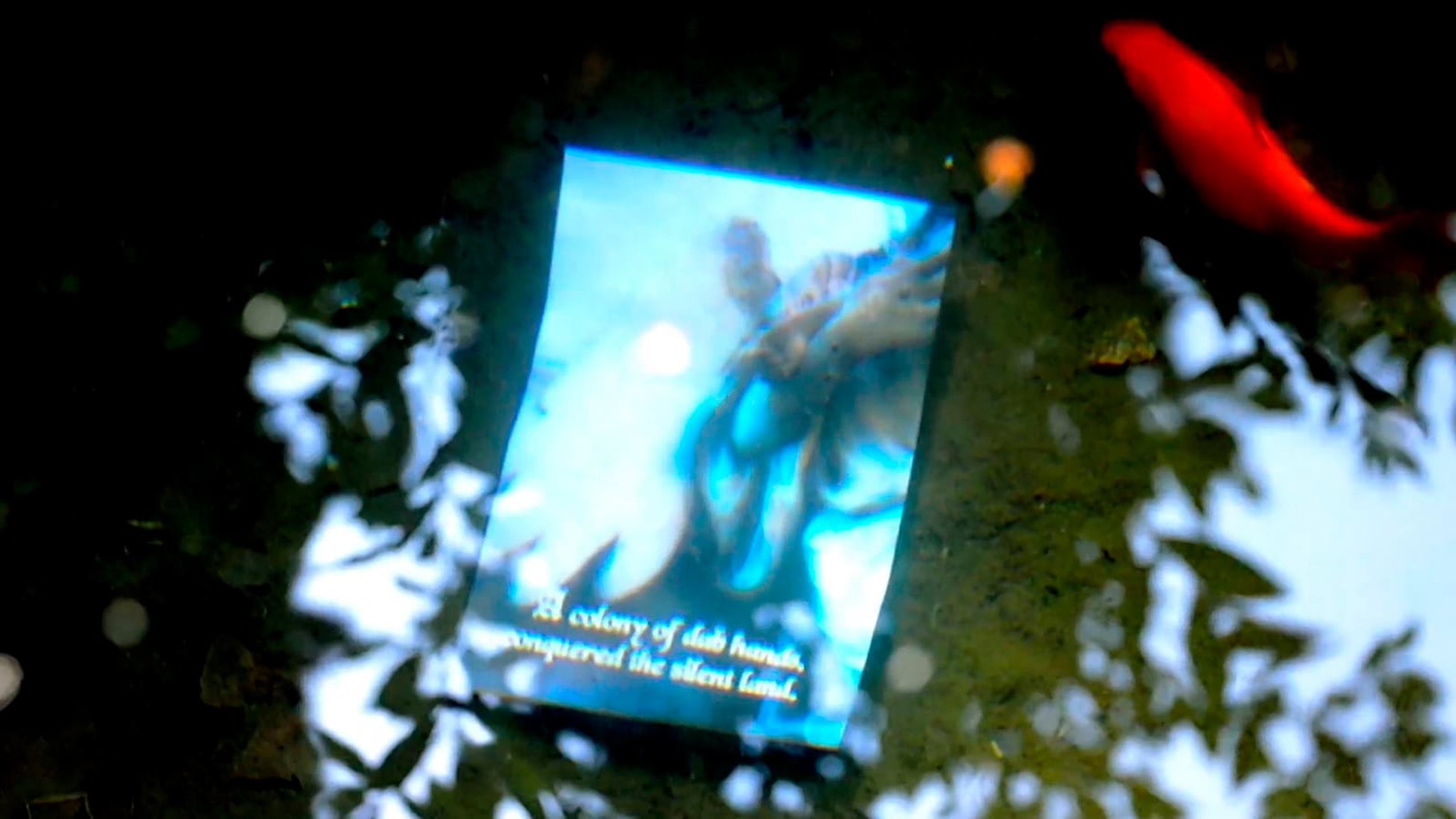
Silent Machines came out this April, in the middle of the first wave of the pandemic and global lockdowns. It’s a haunting film that captures sculptural installations set in the abandoned, entropic site of the former Colombia Record Factory in Athens. The ghostly atmosphere of the whole scene is narrated by a poem by Georgios Karamanolakis’ sound peace and subtitled poem. Later on this year you made another film project – A tale of the Future Damned – which is in itself a compact video-piece. Can we say Hyperlink is basically your artistic practice pushed out into another persona?
Y. V.: With Silent Machines we pushed our boundaries again. We had – let’s say –, an exhibition through the medium of film. We can say it’s a curatorial platform, but at the same time, it’s also an art piece. It’s always moving and progressing. We’re experimenting here. As individual artists and as Hyperlink, we do have this post-apocalyptic concept, that we always take into consideration.
A. K.: Hyperlink is an art piece as it is. I consider it as a part of my practice. We want the final outcome to be more than a text, a sound or the photographic documentation of an artwork – rather we use all of those, blend together. We collaborate as much as we can, but we don’t want to ask people to do something for us for free. We want them to be part of it, to be active and go a step further on their artistic approach. To think in a way they wouldn’t have thought before. We can’t say a project is finished. We started to work on Silent Machines back in 2019, so it’s not a corona project, although it perfectly fit. Both of our practices are very close to the topics of utopia and dystopia and we both love and inspired by science fiction, which is true for Hyperlink as well. Especially now, when it really feels as if we lived the future of past sci-fi, some post-apocalyptic environment with viruses and post-humans.

Y. V.: The current crisis provided us a chance to step back and reflect on everything: on our personal relationships, on how we move in the social space, on everything. That’s the good aspect of all this. In case of the video-piece, – A tale of the Future Damned – we were asked to do a curation for Plague Pro’s project, Garden of Death. It was during the first wave of the pandemic, so most of the people in our close community was very confused and we didn’t want to push anyone to collaborate on art projects during this time. That became an artwork in the end, not a curation.
A. K.: Everything we do have more meaning in these circumstances. We try be as much political as we can. You can’t do something just for the shake of it, just to be out there, to be present. You put your voice out there during a global crisis. If you exist out there: why? For me, that was the question. Why it is important for me to be an artist? What is my use? Even if it is not immediately political, even if it’s hidden somewhere, we have to be conscious about it. I think this situation thought us a lot. At the moment we work with only Greek artists and it’s amazing. Most of the summer we’ve been working on a collaboration – Delphian Landscapes – with OMIO, a local intervention team building light installations. We made an underwater structure together in an industrial area near Corinth. The final video-piece was supposed to be presented in Manifesta Biennial 13 in Marseille’s Sissi Club gallery, where we’ve been invited to do a curation. In the end, the event among many others had to be cancelled due to health measures.
Athens and especially it’s Exarcheia district have been known as the „anarchist district” of the city. There have been many refugee squats organised by this community. After the 2019 elections, prime minister Kyriakos Mitsotakis and the ruling New Democracy party started to attack the squats of Athens. What is going on with squat culture in the city now?
Y. V.: The government is extremely corrupt and they have the media on their side. It’s one of the most corrupted media now. There are scandals going on and on, it feels like a never-ending story. The moment they gained power they shot down all the squats and put migrants out. There are still neighbourhoods trying to help, but they are continuously being attacked. The situation is very difficult but we’ve had a big victory now. The Golden Dawn neo-nazi party was evicted by the court as a criminal organisation. They were part of the parliament since 2012. It doesn’t mean that fascism stops there, because it’s presents in very different aspects in our society. It’s also a dangerous virus. There was a sense of celebration in the city, although they tried to stop it with police attacks. I was there outside the court, waiting for the sentence to be announced. The moment it was out we started celebrating, but again, the police attacked us with tear-bombs.
A. K.: Out of the general crowd (which was about 20000 people) 3000 was anarchists, who fought back the riot police. The Antifa movement is very organised here and that’s a big relief. The laws are very corrupt so there’s a street justice. There are still squats, organised. I think this is the biggest part of why the city as lawless as we say and as free as we feel. It has an impact everywhere in the youth, the art scene, the student communities in Greece.
Y. V.: The situation with fascism is so serious here that you just have to fight back. It’s a social calling. In the University of Fine Art here in Athens, there was a great initiative this September. They have a lot of residencies in the Islands and when the refugee camp in Moria burnt down in the island of Lesbos, they gave immigrants the opportunity to stay in these residency spaces. Some students took the initiative to raise signatures and they made a public call saying that they provide the space for people who need it. It’s very hopeful. There is a fightback.
We should all get more imaginative and creative when we think about resistance, parallel to the classical ways of going to protests which – here in Hungary at least – usually end up just walking home, knowing that nothing will change.
A. K.: It feels like everything is gonna start burning, everything is so sensitive. There should be some resistance everywhere. Even awareness matters. For example, for anarchists it’s a practice to just meet every week and discuss political situations. Even just having people to tell you: no, you’re not insane for thinking this – counts a lot. When people communicate it can work, that is part of why communal spaces and self-organisations are important. Even cooking food is something like this. Here in Athens, these things can still happen and that’s what resistance is: people coming closer together instead of separating themselves. Because both the capitalistic and the fascist systems build on separation and promotes the individual. You’re alone, you sit in your house and you buy stuff from Amazon. Resistance is the opposite. Anything can be resistance.
Cover image: Origins video still © Hyperlink Athens
This article was created with the support of Summa Artium.
